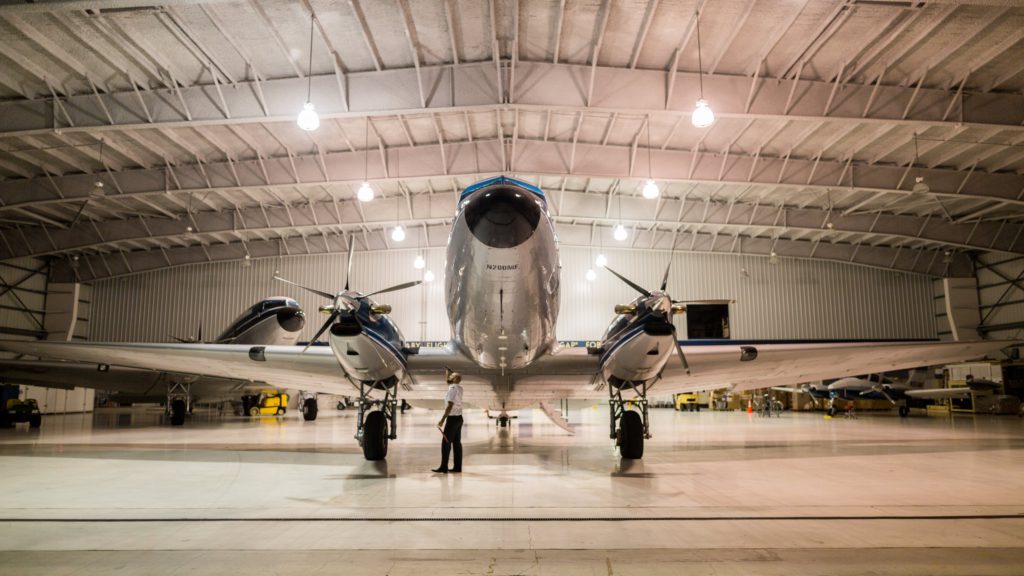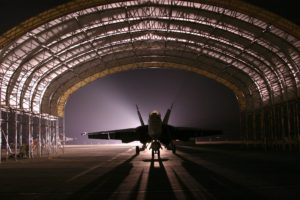
The Importance Of Aircraft Hangars
Aircraft maintenance hangars are the most commonly used MRO facilities designed and built exclusively for carrying out major aircraft repairs, as opposed to routine maintenance and general maintenance. At airports and airstrips around the world, non-commercial hangar service facility managers are more than ever required to accommodate multi-million dollar aircraft and perform complex maintenance checks. Maintenance halls can be a costly affair, as they are not only installed to repair the aircraft but are also equipped with associated maintenance stands, scaffolds, tools, test benches, repair workshops for components, hydraulic systems and components such as actuators and brakes, which are still in use.
The storage hangar serves to protect the aircraft from the elements, while the maintenance hangar was built and designed for a different purpose. While the storage hangar is small, cramped and large enough to accommodate an aircraft, a maintenance hangar has an open space and acts as a place where major repairs can be carried out on the aircraft. It is important that the airport hangar design is well developed. While maintenance halls are used exclusively by MRO arenas, maintenance halls are wide, open halls whose sole purpose is to carry out major aircraft repairs.
 Space is also important for the quality of the maintenance halls needed for repairs, as massive aircraft require a lot of space to operate. In addition to aircraft storage, hangars can also be used for other purposes. This can happen if you need extra space for your aircraft in the hangar to do a little maintenance on it, or for storing things like tools in the workshop.
Space is also important for the quality of the maintenance halls needed for repairs, as massive aircraft require a lot of space to operate. In addition to aircraft storage, hangars can also be used for other purposes. This can happen if you need extra space for your aircraft in the hangar to do a little maintenance on it, or for storing things like tools in the workshop.
Several different formations can be used to store aircraft, and it often depends on how many you will store in a hangar. Depending on what you plan to do with your hangar space, the type of aircraft to be stored will determine whether your aircraft is private or commercial, what type of hangar you need. Planners should comply with local building codes, incorporate the characteristics of possible aircraft that will populate the hangar and develop space requirements for the intended use of the hangar.
It is important to note that aircraft maintenance hangars (also known as MRO hangars) are not only found in regional, national and international airports. Warehouses are large and expensive structures that are built and maintained, but they allow operators to store, move and operate aircraft. These hangars offer plenty of room to manoeuvre the aircraft and carry out maintenance work on the aircraft.
The floor of your maintenance hangar plays an important role not only in maintenance and efficiency but also in the general safety of your fleet on the ground and in the air. Aircraft repairs and maintenance require floor coverings that can withstand extreme wear, impact and abuse. Everyone wants a nice, non-slip hangar floor on which their aircraft and fleet can be displayed and accommodated, but for aircraft maintenance, it is more than just ground performance and function. Aircraft hangars vary from simple shady structures that protect parts of the aircraft from the elements to complex, controlled maintenance facilities where robots apply radar-absorbent coatings.
Unloading your aircraft in a hangar can have a significant impact on the overall cost of aircraft maintenance. For maximum use of an MRO airport hangar, you need a qualified and dedicated maintenance professional who uses the aircraft maintenance hangar and GSE as housing. That is why you need the right ground support equipment to ensure that the maintenance of the aircraft hangar runs smoothly daily.
As we have already discussed, the importance of an aircraft hangar is a critical component for a safe and productive MRO maintenance facility. Although this may seem obvious, many people end up using their aircraft hangars for other things than their aircraft storage.
The reason why such activities can displace aircraft owners looking for hangar space for aircraft storage and operation is that any non-profit or charitable activity itself can involve the storage or operation of an aircraft. As long as a hangar serves its primary purpose of storing aircraft and non-aviation objects, it does not infringe the obligations of the airport sponsor at the federal level.
Aviation storage equipment, towing reaches, gliders, towing equipment, workbenches, tools, materials used for the maintenance, repair or equipping of aircraft, as well as items related to ancillary or ancillary uses that do not affect the primary use of the hangars. Agreements stipulate that land facilities at airports, including aircraft hangars, may only be used for aviation purposes.
Qantas Hangar Lax Base, where maintenance work is being carried out on its Airbus A380 aircraft, is an excellent example of the creation of an MRO facility outside the home stations to benefit from the downtime of scheduled aircraft. The Tulsa-based American Airlines maintenance facility is the largest in the world, covering a total of 3.3 million square feet in 22 buildings and servicing over 800 aircraft with over 100,000 components that are repaired each year.
In addition to defending your aircraft’s aesthetic and operational characteristics, without even mentioning its value, hanging your aircraft reduces insurance costs. With advances in design and technology as well as versatile materials such as steel used in the construction and manufacture of aircraft hangars, we can design the type and style of an aircraft hangar that you need. How you assess the importance and usefulness of storing your aircraft in a hangar, and the type of hangar available, will influence your choice of hangar that suits your needs.